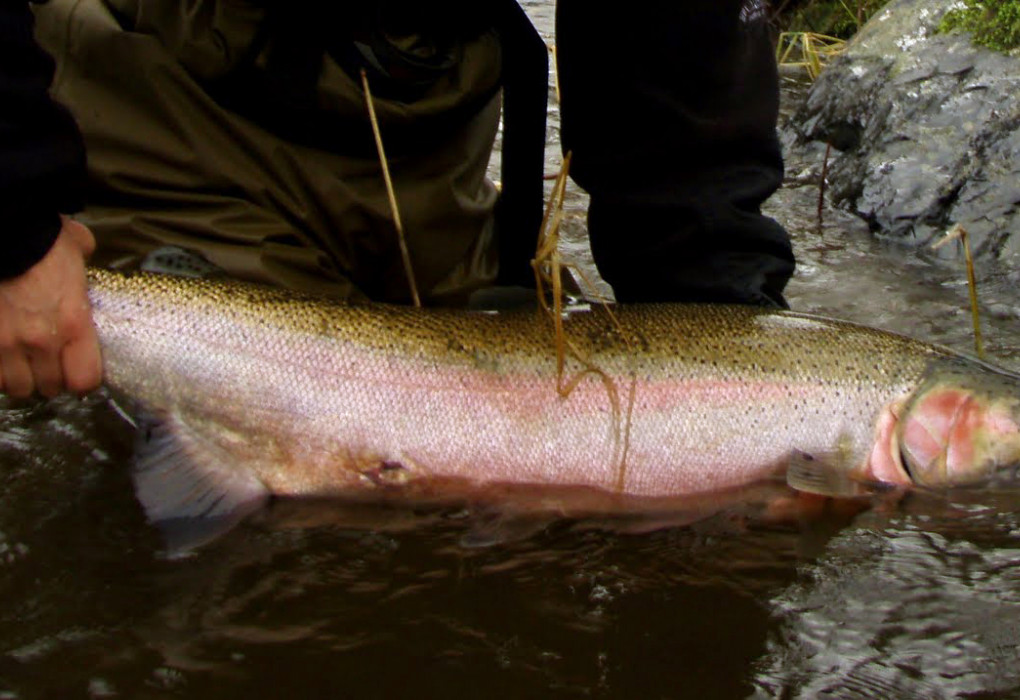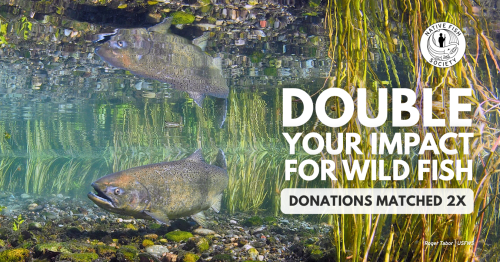Snyder Creek Hatchery & Sol Duc Steel
A WILD STEELHEAD GENE BANK ON THE OLYMPIC PENINSULA
In June 2011, WDFW sought a second round of comments on the future of the guide run Snider Creek hatchery on the Sol Duc River. Wild Steelhead Coalition partnered with Native Fish Society to create an action alert to compliment a formal commentary assembled by Dick Burge and John McMillan. This collaboration and your 300 petitions gave WDFW the support to not only end the Snider Creek Hatchery, but recommend that the Sol Duc become a Wild Steelhead Management Area or Gene Bank for wild, native steelhead by 2014.
This decision will make the Sol Duc the only large river on the Olympic Peninsula to be managed entirely for wild, native steelhead. This decision was one of many possible alternatives posed by the agency following their review of the Snider Creek facility. With the Sol Duc managed for wild, native steelhead WDFW is protecting one of Washington’s largest and most productive runs of wild winter steelhead from the litany of negative effects resulting from interactions with hatchery fish.
Gene Bank Background
Essentially, a Wild Steelhead Management Area (WSMA) or Gene bank is designed to benefit wild steelhead by minimizing the number of competing hatchery-produced fish on the spawning grounds. These substantial sub-basins will not be planted with hatchery fish and are chosen based on factors including current health of wild runs, intact habitat and angling pressure and access. Creating these WSMAs is part of recommended actions compiled by the federally appointed Hatchery Scientific Research Group during their 2004 review of Washington hatchery facilities. In 2008, WDFW incorporated the WSMA strategy into their Statewide Steelhead Management Plan. However, until recently little has changed in the state’s steelhead hatchery practices.
Wild Brood not so Good
The Snider Creek hatchery originated 25 years ago as a partnership between WDFW and the Olympic Peninsula Guide Association. The goal was to create an additional supplement to the native run by annually harvesting 50 – 100 wild steelhead and utilizing their eggs and milt for a wild brood program. Wild steelhead broodstock programs operate under the assumption that hatchery raised steelhead from wild genes result in fish identical to those spawned in the gravel.
Scientific analysis of wild brood programs on the Hood, Deschutes, and Sheep Creek indicate that no benefit is generated for wild fish by running them through the hatchery system. Instead, these wild brood fish, in as early as in one generation, develop traits that favor survival in the artificial environment but impair future survival in the actual river and ocean conditions. As a result, even juvenile steelhead apparently identical to their wild counterparts are quantitatively less likely to return as adults than their wild counterparts.
The Snider Creek hatchery wild brood program was no exception. Sol Duc wild steelhead typically require two years or more to grow to smolt size in the rugged rivers of the Olympic Peninsula. The majority of these wild fish spend an additional two years in the marine environment before returning to spawn.
In the Snider Creek hatchery, however, only a small portion of the fish released after one year of rearing were ready to go to sea. As a result, many of the fry did not smolt and outmigrate but stayed in the river and competed with wild fry. In general, these residualized juveniles were poorly adapted for river survival and most probably succumbed to the rigors of river life before reaching an outmigrating size the following spring.
Taken collectively, the impacts of the Snider Creek hatchery facility resulted in a significant level of competition between hatchery residualized fry and natural wild juveniles. Like other wild broodstock programs before it, the Snider Creek facility did not achieve any benefits for wild fish by using a wild stock in the hatchery, and only modestly increased the success of their hatchery program at the expense of fewer wild steelhead.
Again, the conclusion born out of 150 years of hatchery propagation is that salmonids are most abundant and productive when we leave wild stocks in free flowing rivers, do not rely upon hatchery production, ensure adequate flows and prevent habitat degradation before it starts.While we have been successful in growing hatchery salmon and steelhead, we have not constructed a mechanism that prepares these fish for river survival as well as their natal streams.
The Result?
As a result of the closure of the Snider Creek Hatchery wild fish will have an entire watershed on the Olympic Peninsula in which to become abundant. The Quillayute system (including the Sol Duc, Bochewagel and Calwaha) has seen a decline in the average number of wild steelhead from 17,600 in the 1950s to 10,700 in recent years.This decline has been noted especially in the early component of the winter run. According to historical record this early component comprised at least half of the historic winter run.Hatcheries selected for early returning steelhead which combined with wild fish. During these sport fishery seasons harvest was allowed on both wild and hatchery fish, causing the further decline of the early run. Without question, setting aside the Sol Duc to recover historic numbers of wild winter steelhead is a great victory for one of the most treasured rivers on the Olympic Peninsula.
Thank you WDFW, NFS members
In the next year the WDFW commission will review the staff recommendation to close the Snider Creek Hatchery and designate the Sol Duc a WSMA for 2014.Native Fish Society thanks the WDFW staff for their strong support of wild fish and beginning the hard work to implement the hatchery recommendations of the Statewide Steelhead Management Plan on the Olympic Peninsula.
We also thank you, NFS members, for your strong support and 300 petitions to WDFW. Without the support of the public, our agencies face even greater difficulties in their future work to conserve wild salmon and steelhead and utilize the best available science. These landmark decisions will always be challenged by the staying power of the status quo. It is critical that you continue to use your voice for wild fish.
The Native Fish Society is committed to partnering with likeminded organizations across the Pacific Northwest to leverage your voice to make sure the future is full of wild fish. Thank you for your support and keep your eyes open for an Action Alert thanking WDFW staff and commission for making the Sol Duc the first wild steelhead management area on the Olympic Peninsula.


